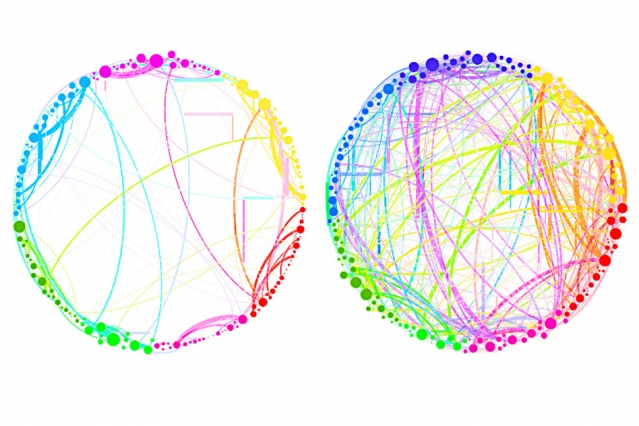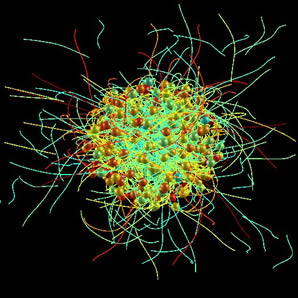The Montreal Neurological Institute (MNI) in Québec, Canada, known informally and widely as Montreal Neuro, has ‘opened’ its science research to the world. David Bruggeman tells the story in a Jan. 21, 2016 posting on his Pasco Phronesis blog (Note: Links have been removed),
The Montreal Neurological Institute (MNI) at McGill University announced that it will be the first academic research institute to become what it calls ‘Open Science.’ As Science is reporting, the MNI will make available all research results and research data at the time of publication. Additionally it will not seek patents on any of the discoveries made on research at the Institute.
…
Will this catch on? I have no idea if this particular combination of open access research data and results with no patents will spread to other university research institutes. But I do believe that those elements will continue to spread. More universities and federal agencies are pursuing open access options for research they support. Elon Musk has opted to not pursue patent litigation for any of Tesla Motors’ patents, and has not pursued patents for SpaceX technology (though it has pursued litigation over patents in rocket technology). …
Montreal Neuro and its place in Canadian and world history
Before pursuing this announcement a little more closely, you might be interested in some of the institute’s research history (from the Montreal Neurological Institute Wikipedia entry and Note: Links have been removed),
The MNI was founded in 1934 by the neurosurgeon Dr. Wilder Penfield (1891–1976), with a $1.2 million grant from the Rockefeller Foundation of New York and the support of the government of Quebec, the city of Montreal, and private donors such as Izaak Walton Killam. In the years since the MNI’s first structure, the Rockefeller Pavilion was opened, several major structures were added to expand the scope of the MNI’s research and clinical activities. The MNI is the site of many Canadian “firsts.” Electroencephalography (EEG) was largely introduced and developed in Canada by MNI scientist Herbert Jasper, and all of the major new neuroimaging techniques—computer axial tomography (CAT), positron emission tomography (PET), and magnetic resonance imaging (MRI) were first used in Canada at the MNI. Working under the same roof, the Neuro’s scientists and physicians made discoveries that drew world attention. Penfield’s technique for epilepsy neurosurgery became known as the Montreal procedure. K.A.C. Elliott identified γ-aminobutyric acid (GABA) as the first inhibitory neurotransmitter. Brenda Milner revealed new aspects of brain function and ushered in the field of neuropsychology as a result of her groundbreaking study of the most famous neuroscience patient of the 20th century, H.M., who had anterograde amnesia and was unable to form new memories. In 2007, the Canadian government recognized the innovation and work of the MNI by naming it one of seven national Centres of Excellence in Commercialization and Research.
For those with the time and the interest, here’s a link to an interview (early 2015?) with Brenda Milner (and a bonus, related second link) as part of a science podcast series (from my March 6, 2015 posting),
Dr. Wendy Suzuki, a Professor of Neural Science and Psychology in the Center for Neural Science at New York University, whose research focuses on understanding how our brains form and retain new long-term memories and the effects of aerobic exercise on memory. Her book Healthy Brain, Happy Life will be published by Harper Collins in the Spring of 2015.
- Totally Cerebral: Untangling the Mystery of Memory: Neuroscientist Wendy Suzuki introduces us to scientists who have uncovered some of the deepest secrets about our brains. She begins by talking with experimental psychologist Brenda Milner [interviewed in her office at McGill University, Montréal, Quebéc], who in the 1950s, completely changed our understanding of the parts of the brain important for forming new long-term memories.
- Totally Cerebral: The Man Without a Memory: Imagine never being able to form a new long term memory after the age of 27. Welcome to the life of the famous amnesic patient “HM”. Neuroscientist Suzanne Corkin studied HM for almost half a century, and gives us a glimpse of what daily life was like for him, and his tremendous contribution to our understanding of how our memories work.
Brief personal anecdote
For those who just want the science, you may want to skip this section.
About 15 years ago, I had the privilege of talking with Mary Filer, a former surgical nurse and artist in glass. Originally from Saskatchewan, she, a former member of Wilder Penfield’s surgical team, was then in her 80s living in Vancouver and still associated with Montreal Neuro, albeit as an artist rather than a surgical nurse.
Penfield had encouraged her to pursue her interest in the arts (he was an art/science aficionado) and at this point her work could be seen many places throughout the world and, if memory serves, she had just been asked to go MNI for the unveiling of one of her latest pieces.
Her husband, then in his 90s, had founded the School of Architecture at McGill University. This couple had known all the ‘movers and shakers’ in Montreal society for decades and retired to Vancouver where their home was in a former chocolate factory.
It was one of those conversations, you just don’t forget.
More about ‘open science’ at Montreal Neuro
Brian Owens’ Jan. 21, 2016 article for Science Magazine offers some insight into the reason for the move to ‘open science’,
Guy Rouleau, the director of McGill University’s Montreal Neurological Institute (MNI) and Hospital in Canada, is frustrated with how slowly neuroscience research translates into treatments. “We’re doing a really shitty job,” he says. “It’s not because we’re not trying; it has to do with the complexity of the problem.”
So he and his colleagues at the renowned institute decided to try a radical solution. Starting this year, any work done there will conform to the principles of the “open-
science” movement—all results and data will be made freely available at the time of publication, for example, and the institute will not pursue patents on any of its discoveries. …
“It’s an experiment; no one has ever done this before,” he says. The intent is that neuroscience research will become more efficient if duplication is reduced and data are shared more widely and earlier. …”
After a year of consultations among the institute’s staff, pretty much everyone—about 70 principal investigators and 600 other scientific faculty and staff—has agreed to take part, Rouleau says. Over the next 6 months, individual units will hash out the details of how each will ensure that its work lives up to guiding principles for openness that the institute has developed. …
Owens’ article provides more information about implementation and issues about sharing. I encourage you to read it in its entirety.
As for getting more research to the patient, there’s a Jan. 26, 2016 Cafe Scientifique talk in Vancouver (my Jan. 22, 2016 ‘Events’ posting; scroll down about 40% of the way) regarding that issue although there’s no hint that the speakers will be discussing ‘open science’.

